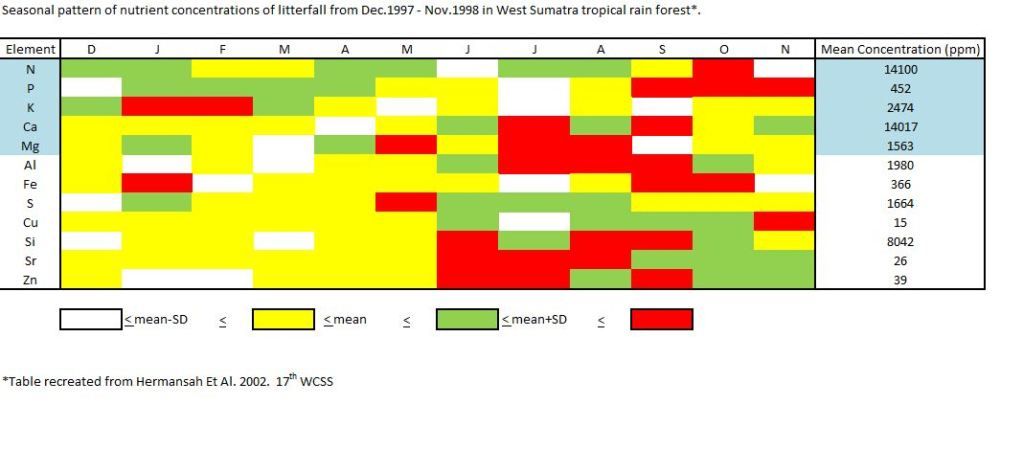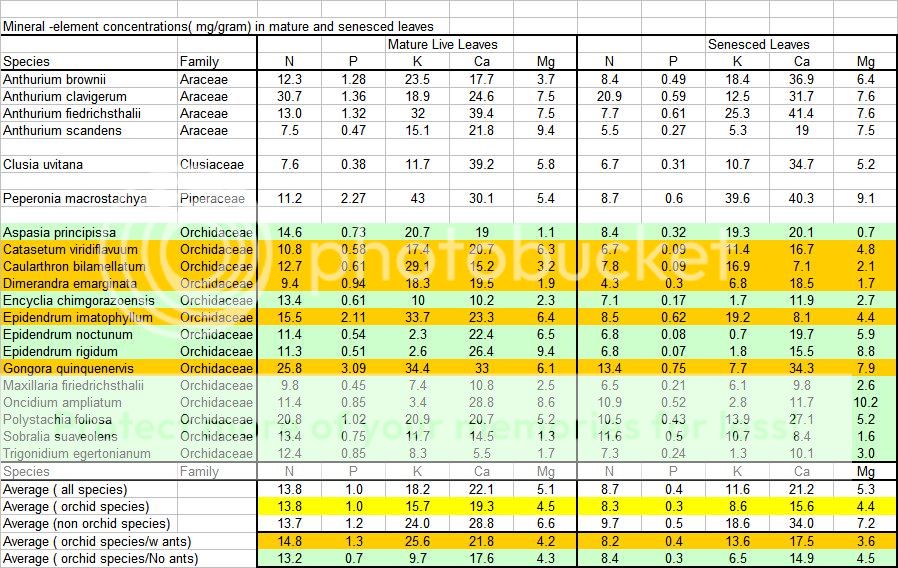Yes I noticed that. It points an adaptation of epiphytes to favour K over Ca. and the same for P. It would be interesting to see data from the actual trees they are growing on.
Yes the bromiliad physiology paper Ray and I pointed out a ways back shows that epiphytic plants expend considerable effort to collect and sequester (conserve) a rare comoditity (K) in their environment. However just because the plants "favour" K it doesn't make them immune to antagonistic imbalances when the resource is supplied in unlimited amounts.
The whole "kid in the candy store" phenomena. Sugar is definitely "favoured" over more nutritious foods by children. But we are all aware of the human health issues associated with excess sugar consumption.
This brings up the whole argument about looking at nature for answers to GH generated problems again. Your own leaf tissue/litter data shows that epiphytic orchids in the wild do not have K at concentrations and nutrient ratios generally represented in the typical "balanced" fertilizer (and these plants do just fine without fertilizing). However, the MSU fert was developed on leaf tissue data from what was considered quality growing greenhouse plants. Which by looking at the numbers would verify that orchids "in the candy store" will try to suck up as much K as you can give them. And there is no doubt that lots of growers have lots of problems with large numbers of their plants.
Now we cycle back to the question of why we have all these problems with our GH plants while the wild plants are doing just fine. I've already checked off the boxes for temp/light/humidity. So now looking at food.






